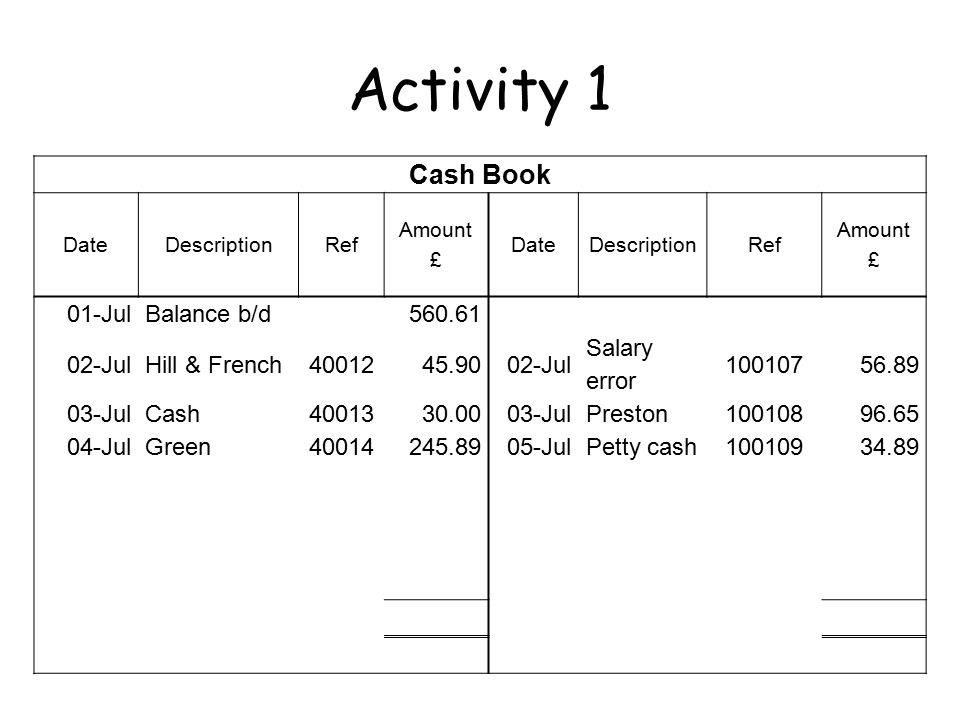Debits Vs Credit: A Easy, Visible Guide Bench Accounting
Additionally, keep a record of widespread errors made in journal entries. By familiarizing your self with these errors such as transposing digits or misclassifying expenses, you presumably can keep away from making them in the future. It ensures that your financial statements replicate the true state of your small business, providing you with an correct representation of its profitability, liquidity, and stability. With exact reporting, you’ll have the ability to confidently analyze developments, determine potential dangers or alternatives, and make strategic selections to drive growth.
This is proven in the example of recording the sale of a fixed asset for cash, the place there are three debit entries and one credit score entry, each totaling $16,800. Related to credit balances, debit balances have a major impression on monetary statements. When getting ready monetary statements, debit balances are usually presented on the left side of the steadiness sheet or the top of the earnings statement. This presentation follows the accounting convention of inserting debits on the left aspect of a T-account. It helps in providing a comprehensive view of the monetary position and efficiency of an entity.
You’ll notice that the functions of debits and credit are the exact opposite of every other. Earlier Than stepping into the differences of debit vs. credit score accounting, it’s essential to know that they actually work collectively. Belongings and expenses are optimistic accounts, while Fairness, Income, and Liabilities are unfavorable accounts.

Optimizing Accounting Reserve Account Management Strategies
To record your transactions in T-Accounts, you could think it’s complicated at first, however once you perceive the idea of debits and credits, it becomes a simple process. Firstly, in phrases of belongings, debits enhance the balance while credits decrease it. Have you ever felt like journal entries in accounting had been as complicated as trying to navigate a maze blindfolded? In this article, we’re right here to simplify the complicated world of debits and credits for you.
The Function Of Debits And Credit In Bookkeeping
So it genuinely is just a conference that debits are usually represented as constructive numbers. One of the key attributes of a credit balance is that it indicates a constructive financial position. It signifies that the account has more inflows than outflows, resulting in a surplus.

For each transaction, you’ll need to report each a debit and a corresponding credit in two different accounts. For example, whenever you buy stock, you’ll debit your inventory account and credit score your cash or accounts payable account. Finally, this system helps maintain your books balanced and helps make sure nothing slips via the cracks. The means it was taught to me in class was that WHEN POSTING ENTRIES, debit and credits were all just constructive numbers. You had your two columns, one for debit, the opposite credit score, and simply wrote absolute numbers. (ex. Debit $100, Credit Score $100) What in the end would dictate the sign for the quantity would be what sort of account it was being posted to.
- A T-Account reveals debits on the left, and credit on the best for ONE account per T.
- Whereas a credit balance represents a surplus or revenue, a debit steadiness represents a deficit or loss.
- It doesn’t provide a complete monetary image, making it difficult to prepare normal monetary statements like the stability sheet and income assertion.
- For instance, when an organization buys workplace supplies with cash, it debits the supplies account because assets increase.
Understanding Debits And Credits In Bookkeeping And Accounting: A Comprehensive Guide
First, your money account would go up by $1,000, since you now have $1,000 extra from mother. Let’s say your mother invests $1,000 of her personal cash into your organization. Using our bucket system, your transaction would appear to be the following. Let’s do one more example, this time involving an equity account. In addition to adding $1,000 to your money bucket, we might even have to increase your “bank loan” bucket by $1,000.

Debit balances are typically found in asset accounts and expense accounts. They characterize property owned or expenses incurred by a enterprise. By making these adjustments, you possibly can be sure that your monetary statements accurately symbolize https://www.simple-accounting.org/ the current state of affairs.
A T-account is the visual illustration of an account, and it is a powerful tool for monitoring and balancing transactions. The accounting equation is hidden in plain sight when you have a look at a T-account. Debits and credits should be in steadiness because it prevents errors in bookkeeping information.
This may help you rapidly establish which transactions are including to or subtracting from the account steadiness. We’ve totally explored debits and credit in accounting, chopping via jargon to help you understand their objective. T-Accounts show debits on the left side, and credits on the right facet. Relying on the account TYPE, you’ll use totally different sides for will increase and reduces. Credits enhance liabilities and fairness accounts, or the RIGHT facet of the accounting equation. While debits and credits in accounting may seem insignificant, they are the backbone of accounting.
